Last Chance to Catch NYC's Holiday Notalgia Train
We met the voices of the NYC subway on our nostalgia ride this weekend!


As the oldest neighborhood in Manhattan, the Financial District holds plenty of secrets. Founded in 1624, the area dates back to the days of Dutch New Amsterdam. During the British colonial era, it became an important seat of the American Revolution and held important buildings like Federal Hall, which was originally meant to be the seat of federal government when New York City — not Washington D.C. — was the capital of the newly formed United States of America.
Of course, the Financial District became famous as the financial center of the United States — a status that has been depicted in films like the Wolf of Wall Street. But beyond its famous landmarks, the Financial District holds many fascinating stories. From the existence of a hidden park to the fake pediment crowning the New York Stock Exchange, here are ten fascinating secrets of the Financial District.
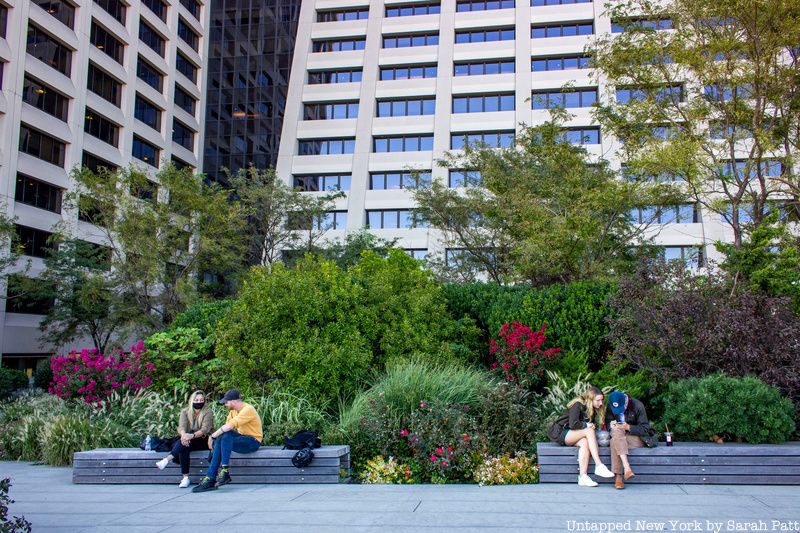
It would be easy to walk right past the escalator at tucked between two office towers at 55 Water Street without a second thought, but take it up and you’ll find yourself in a lush, green oasis in the middle of the Financial District. The Elevated Acre was created in the 1970s and redesigned in 2005. It’s one of New York City’s POPS (privately owned public spaces), which exist thanks to zoning laws that allow developers to build higher if they create public space.
The Elevated Acre has benches and landscaping in addition to a lawn where in-the-know commuters bring their lunch when it’s warm outside. It also has incredible views of the Manhattan Bridge and Brooklyn Bridge.
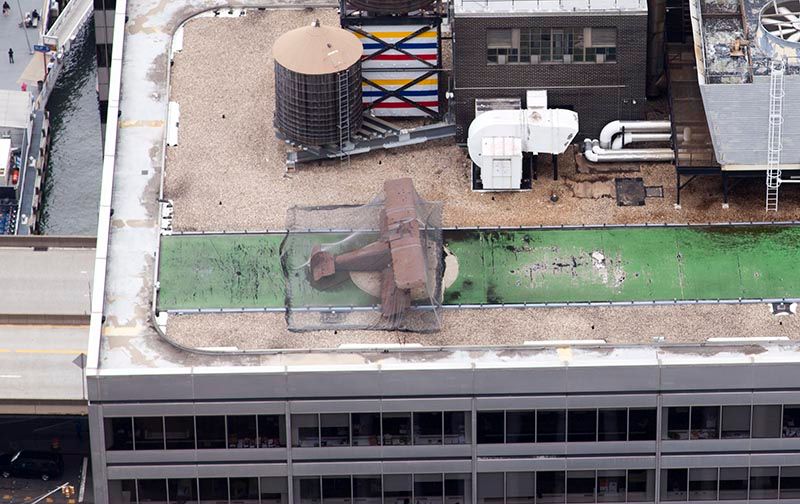
You’d never know it unless you had a bird’s eye view, but on the roof of 77 Water Street is a full-size model of a WWI-era fighter plane ready for takeoff. Why? You might ask. Because real estate developer Melvyn Kaufman wanted to give people in the surrounding office towers something interesting to look at.
Kaufman has been described as an “oddball” and a “sly urban prankster.” He had many quirks. one of which being that he only bought buildings with addresses that contained his lucky number seven. At 77 Water Street, the plane on the roof is only one of the building’s quirks. It also has an old timey candy store off the lobby — and yes, you really can buy candy there.
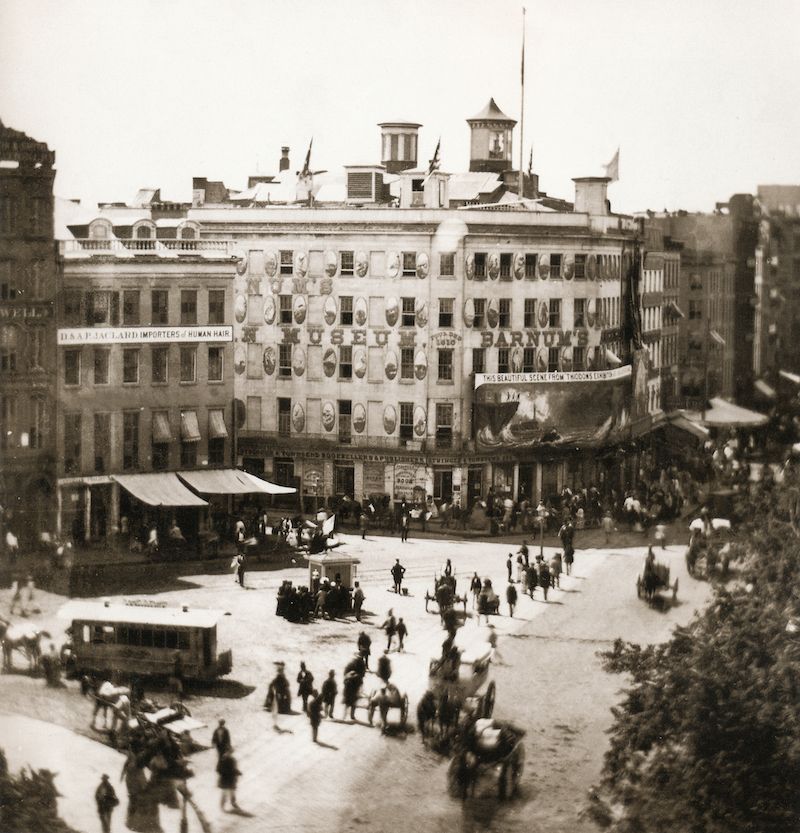
Before establishing the famous Barnum & Bailey Circus, P.T. Barnum built a brick-and-mortar museum on the corner of Broadway and Anne Street, where he exhibited all kinds of oddities. It ran from 1841 – 1865 and received 30 million visitors — the size of the entire population of the United States at the time — before burning down.
One of the most popular acts was a pair of Siamese twins named Eng and Chang, but there were also attractions like the Feejee mermaid and exotic animals, including a small beluga whale. The museum also put on vaudeville shows and performances by ventriloquists and magicians. It even had an oyster bar.
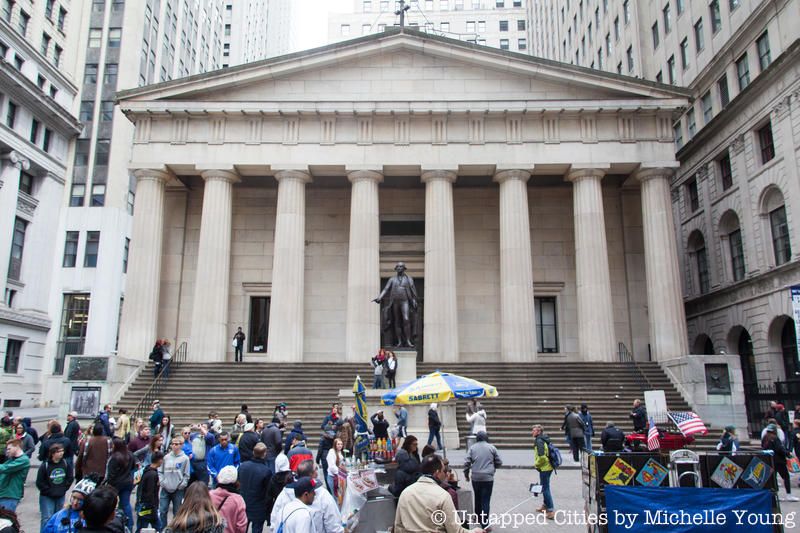
The Neoclassical Federal Hall, right next to the New York Stock Exchange, is one of the Financial District’s most historic sites, so it’s a bit shocking to see that there are large cracks in both its exterior facade and in the interiors. After all, Federal Hall witnessed George Washington take his oath of office when he was inaugurated the first president of the United States. At the time, New York City — not Washington D.C. — was the nation’s capital and Federal Hall was the seat of federal government.
But centuries of wear and tear began to take effect on the building, creating small cracks that were significantly worsened by the seismic shocks that reverberated throughout lower Manhattan on 9/11. A 2004 assessment found significant structural defects in the building, including an empty void of air instead of soil beneath one column. A two-year, $16 million rehabilitation project stabilized Federal Hall and additional restorations were completed in 2015. You can still see the cracks, though.
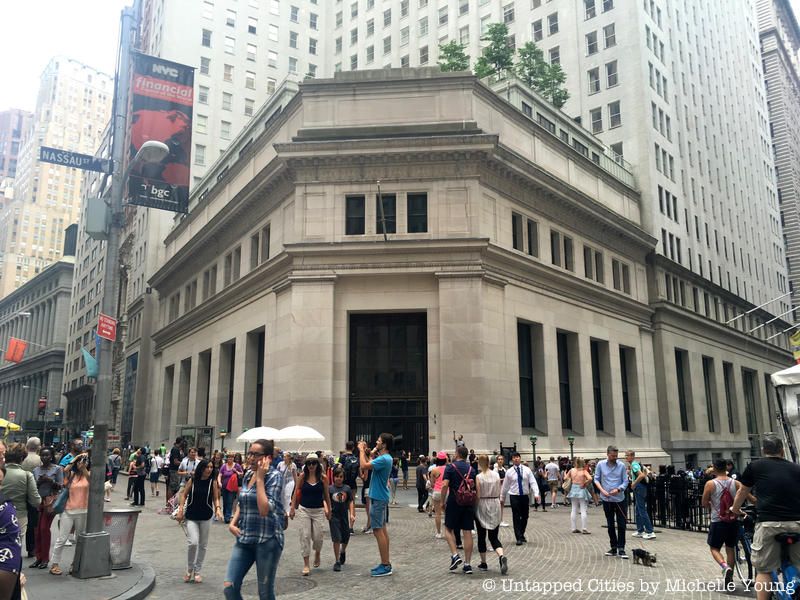
You might not know that 9/11 was not the first attack on Lower Manhattan. In fact, the building at 23 Wall Street still bears the scars of a bombing that took place on September 16, 1920. At the time, the building was the headquarters of J.P. Morgan’s bank, which was constructed in 1914 in a grand Neoclassical style.
As the bells of nearby Trinity Church rang at noon, a horse drawn carriage pulled up and detonated a bomb whose blast tore through the building and shattered windowpanes within a ten-block radius. The explosion killed between 36 and 38 people and caused $2 million in damage. The perpetrators were never found, though it’s believed they were anarchists. Some scars caused by the bombing can still be seen on the facade.
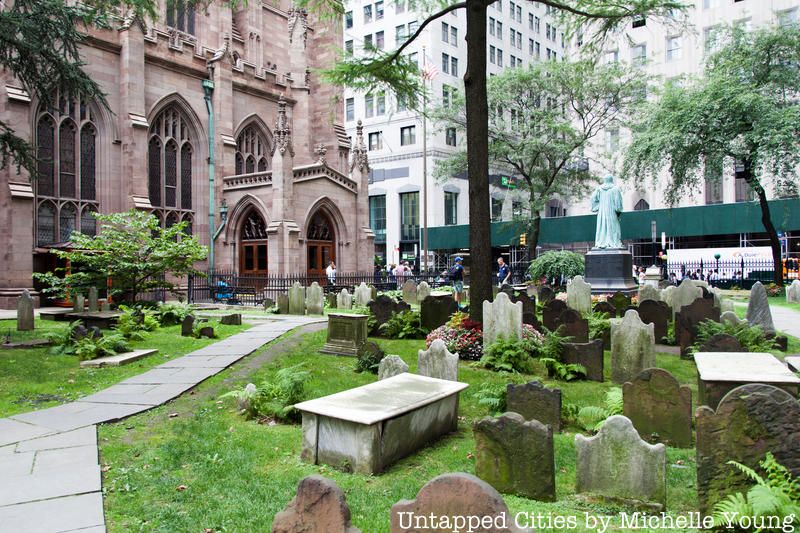
As one of New York City’s oldest churches, Trinity Church is bound to have its fair share of secrets. Aside from the fact that it was once the tallest building in the city, it also boasts a graveyard that serves as the final resting place of Alexander Hamilton, steam engine pioneer Robert Fulton, and a man named James Leeson, who was buried in 1794.
Leeson’s grave might be the most interesting of all, as it’s decorated with a mysterious cryptogram. When deciphered, it reads, “Remember death,” a common warning found on 18th-century headstones. Underneath the cryptogram, Masonic symbols — an hourglass, a compass, and a flame rising from an open vessel — are engraved.
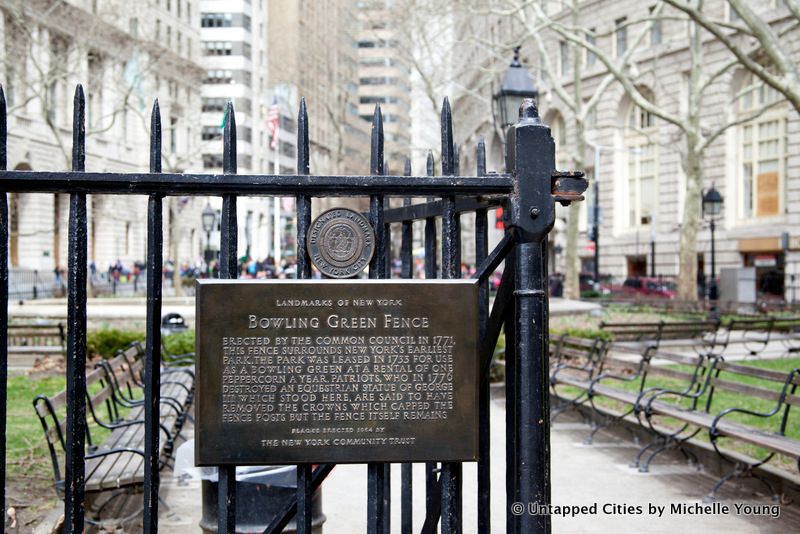
Looking at the iron fence surrounding Bowling Green, the oldest public park in New York City, you wouldn’t necessarily realize just how old it is, but it actually dates back to 1771. It was installed when colonists began to vandalize the statue of King George III as Marcus Aurelius on horseback that the king placed there.
The posts of the fence had crown insignias of King George III, which were sawed off by revolutionaries in 1776, on the same day when they tore down the statue of King George and sent it off to be melted down for musket bullets used against the redcoats. However, a few fragments of the statue survived — possibly hidden by Tories — and can be seen at the New York Historical Society today.
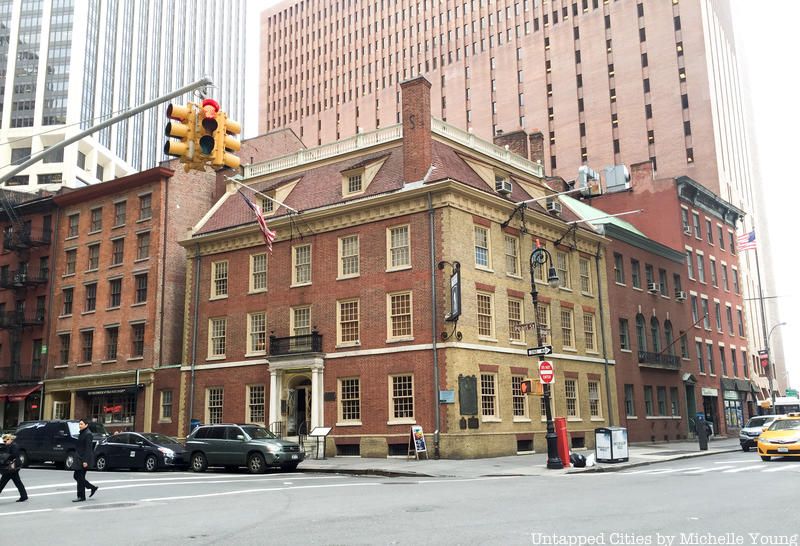
Fraunces Tavern on the corner of Pearl and Broad Streets is often called the oldest building in Manhattan and while it’s unclear if any of the building is actually original, today the upstairs is a small Revolutionary War museum. During the earliest years right after the Revolutionary War established the United States as an independent country, the building served as an office for the ministers of war, finance, and foreign affairs. George Washington gave his farewell address on Pearl Street in 1783.
The next time you’re having a drink in the pub, go upstairs and you can see one of George Washington’s teeth as well as a lock of his hair and even a piece of his coffin.
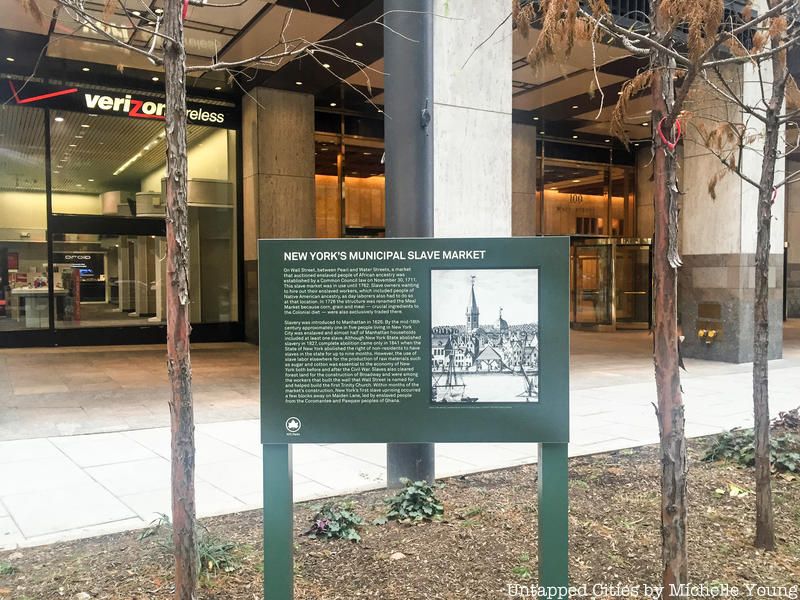
One of the Financial District’s dark secrets is that it was a major center of the slave trade. When Peter Stuyvesant became director general of New York, he realized that the fur trade wasn’t making any money and figured the real money was in the slave trade. At first, slaves were auctioned off right off the boats at the water’s edge, but then the slave market moved up to the edge of the wall.
New York was the second largest slave market — second only to Charleston, which was the center of the slave trade at the time. Slaves literally and figuratively built the wall that gave Wall Street its name. The slave trade brought in so much money for New York that during the Civil War, the city was divided as to whether its allegiance was to the Union or the Confederacy. A small plaque at the base of Water and Wall Streets explains this dark history.
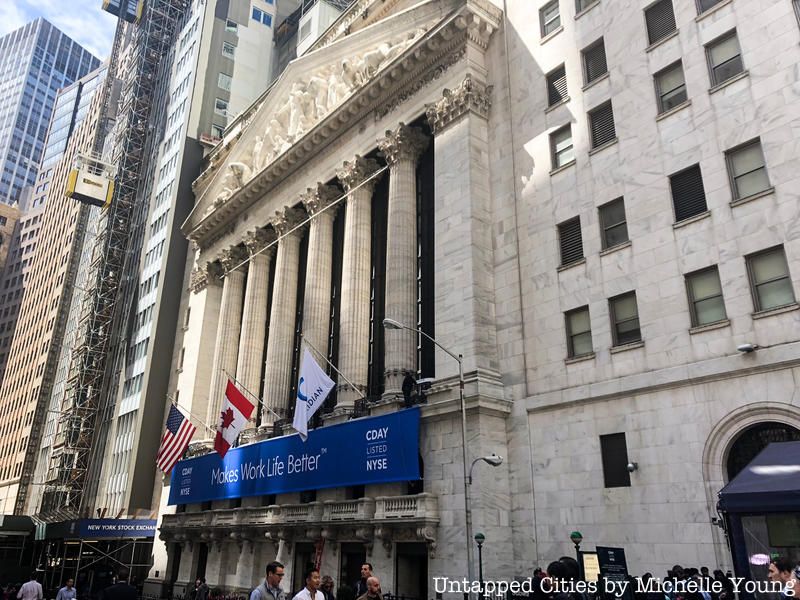
The New York Stock Exchange was designed by George B. Post at the turn of the 20th century and features a pediment designed by John Quincy Adams Ward. Its title is “Integrity Protecting the Works of Man” and it depicts an allegorical figure of Integrity surrounded by workers. It was sculpted out of 90 tons of marble by the Piccirilli brothers, a renowned family of Italian marble carvers known who also sculpted the Lincoln Memorial in Washington D.C.
There was just one problem. In the 1930s, the marble pediment started drooping and pieces of it were at risk of falling off onto pedestrians. It was quietly decided that the heavy marble pediment should be removed and replaced by a skeleton with a copper overlay, which weights just ten tons.
Next, read about the top 10 secrets of Little Italy!
Subscribe to our newsletter